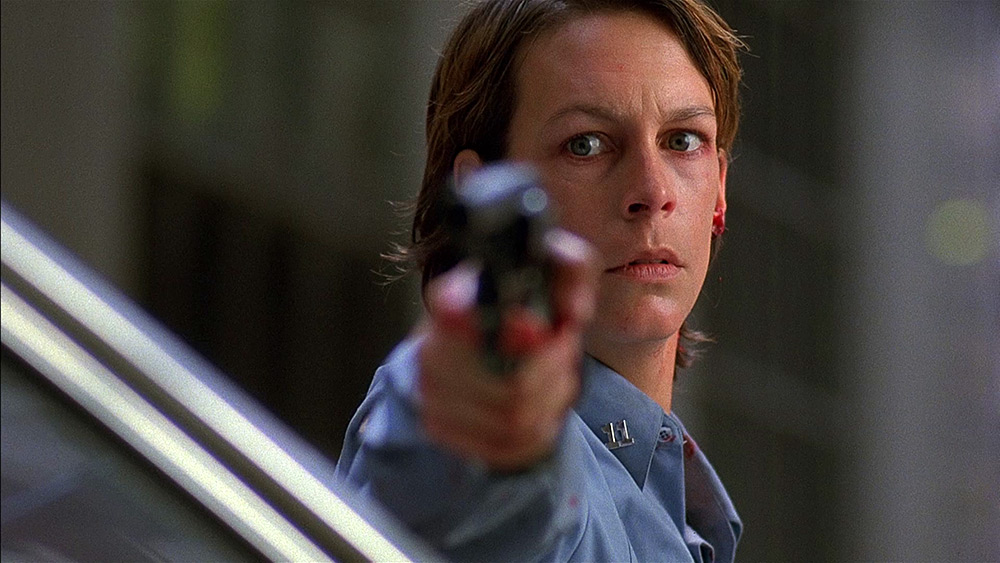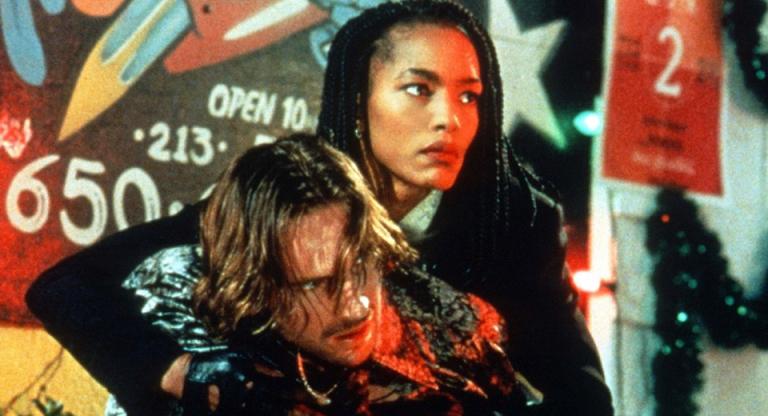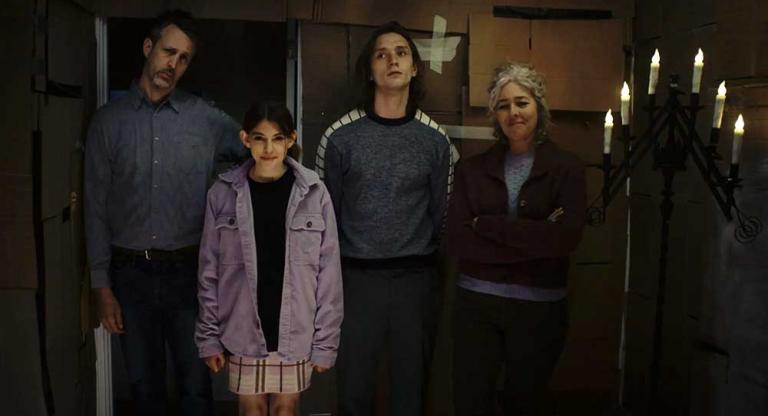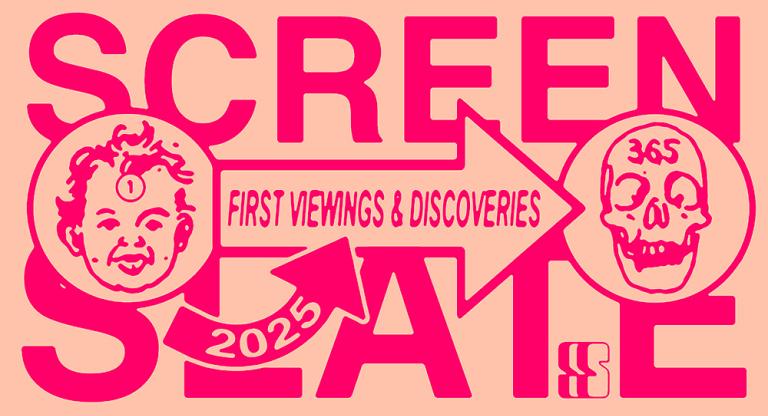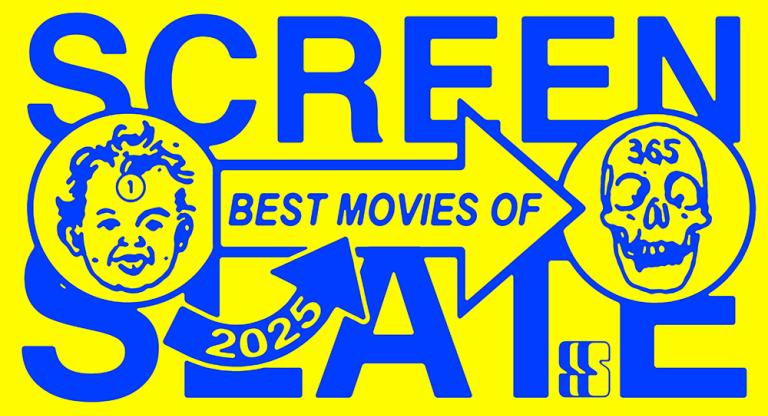When it came time for MGM to market Kathryn Bigelow’s Blue Steel (1990), the studio leaned into its action beats, unveiling a one-sheet of star Jamie Lee Curtis brandishing her character’s NYPD-issue revolver. It’s a bold image typically associated with masculine movie stars like Clint Eastwood, Sylvester Stallone and Burt Reynolds. But Bigelow’s film isn’t a rote action vehicle for Jamie Lee Curtis: her character is continuously criticized for use of force by her male colleagues, relentlessly stalked by a sadistic male antagonist, and caught within the arcane inner workings of the NYPD.
The one-sheet came with a sensational tagline: “For a rookie cop, there’s one thing more dangerous than uncovering a killer’s fantasy. Becoming it.” It’s a succinct way of establishing the fairly convoluted script by Bigelow and screenwriting partner Eric Red. The gist of Blue Steel is that Jamie Lee Curtis plays a cop who kills a burglar in the line of duty and is disciplined for killing an unarmed man after a creep in a business suit, played by Ron Silver, lifts the perpetrator’s gun from the crime scene. He then uses that gun—its bullets engraved with Curtis’s character’s name—to go on a wanton killing spree on the streets of New York, while also terrorizing her in the process. The result is an admittedly unwieldy, albeit very successful, merging of 90s domestic thriller trash, sturdy police procedural, and serial killer exploitation set in a New York in transition from the dirty ‘80s to Giuliani's sanitized vision of the city in the years ahead.
Though the marketing may have promised more of an action movie than Bigelow ultimately delivered, Blue Steel isn’t wont for visceral set pieces, most of which include Curtis and Silver in some sort of violent exchange. But what Bigelow brings to Blue Steel that is unexpected for its genre is the blurring of reality and fantasy. There are a few sequences that, in a lesser film, would be relegated to nightmares, a cheap tactic to startle the audience. But Bigelow allows these moments of stark horror to be a part of the film’s reality, without pushing it into a space that feels unbelievable. It’s an incredibly delicate balance that deftly eschews the typical chase scenes and shoot-outs the genre is known for in favor of carefully composed scenes that utilize shadows even more than light. It’s a constantly thrilling, often very frustrating, account of domestic terror set in one of the most crowded cities in the world that was, for one reason or another, mis-marketed as the feminine answer to Dirty Harry.
Blue Steel shows in 35mm this afternoon at Film Forum in the series Women in Action.
